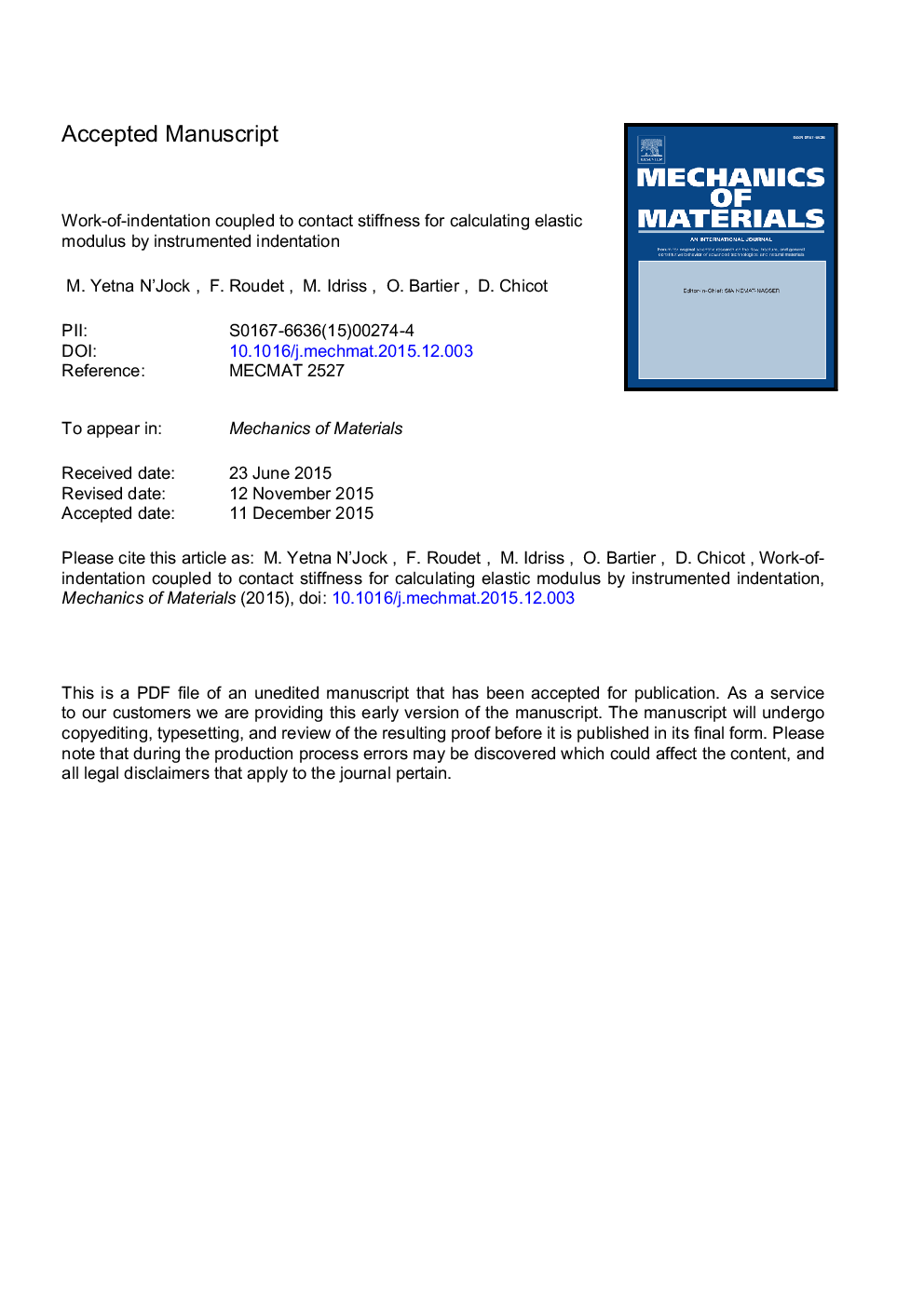| Article ID | Journal | Published Year | Pages | File Type |
|---|---|---|---|---|
| 7178678 | Mechanics of Materials | 2016 | 27 Pages |
Abstract
Elastic modulus of a large variety of materials: low-carbon steel, rolled and rapid prototyping stainless steels, aluminum, brass, beta tricalcium phosphate (β-TCP) bioceramic and the TiB2-60% B4C composite ceramic were determined by Vickers instrumented indentation tests. A relationship the ratio of elastic recovery energy to total work-of-indentation and the product of the maximum applied load and the square of the contact stiffness is proposed to assess the elastic modulus of materials. A proportionality factor κ defining pile-up or sink-in behavior has been validated by both the Finite Element (FE) analysis and inverse method for a material presenting an intermediate mechanical behavior. Values obtained for elastic modulus agree satisfactorily with theoretical values found in literature. The main advantage of the proposed relationship in the determination of the elastic modulus is that it does not require the computation of the contact area between the indenter and the material which is often at the origin of uncertainties.
Keywords
Related Topics
Physical Sciences and Engineering
Engineering
Mechanical Engineering
Authors
M. Yetna N'Jock, F. Roudet, M. Idriss, O. Bartier, D. Chicot,
